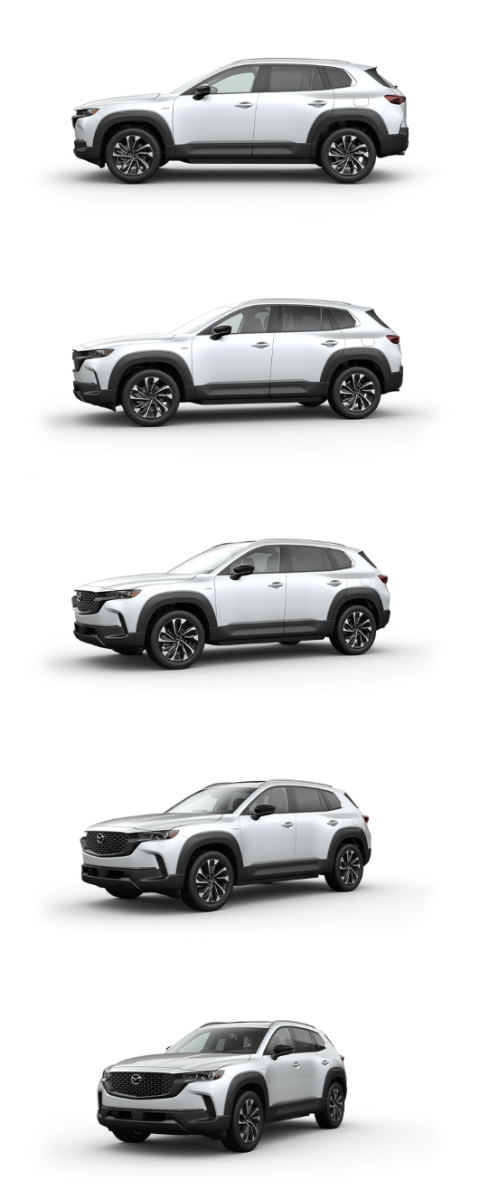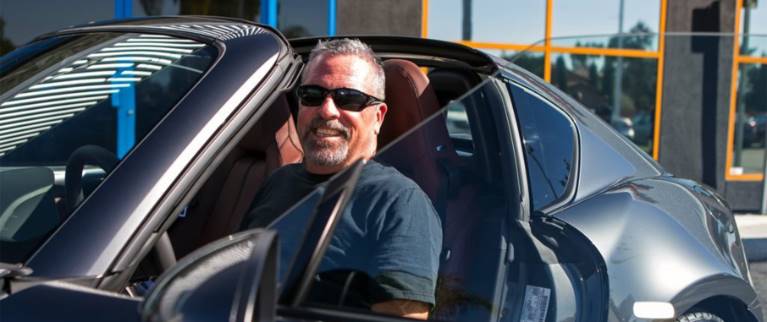EV Safety: Safety Considerations Specific to Electric Vehicles

As electric vehicles (EVs) continue to gain popularity, some drivers looking to adopt this new type of vehicle have concerns about battery safety. In fact, a 2023 survey by Deloitte revealed that 30% of United States consumers list EV battery safety as a significant barrier to adoption.
While EVs might operate differently from internal combustion engine (ICE) vehicles, they are held to the same rigorous Federal Motor Vehicle Safety Standards as all conventional cars and trucks sold in the U.S. These regulations identify the minimum safety performance requirements all vehicles must meet, no matter what powers them. Let’s take a closer look at some of what we know about EV safety in today’s market.
What is the safety of electric cars and are they safer than gas-powered vehicles?
Like gas-powered vehicles, electric car safety depends on various factors like technology, driver behavior, road conditions, and more. Safety can vary in vehicles of any type due to factors such as vehicle size, age, accident history, modifications, and the funciones de seguridad available on different makes and models. Thus, directly comparing the safety of gas-powered vehicles to electric ones is challenging.
Recent research by the Highway Loss Data Institute (HLDI), an affiliate of the Insurance Institute for Highway Safety (IIHS) over an eight-year period suggests injury claims from EV occupants were 40% lower than equivalent gas models. A similar HLDI study on hybrid vehicles found lower injury odds than in non-hybrid (gas) vehicles as well.
EVs are generally newer cars and come equipped with the latest safety equipment, including features that shut down internal electric systems after a collision or short circuit.
It’s also important to note that the National Highway Traffic Safety Administration (NHTSA) finds newer vehicles safer than older vehicles, no matter their source of power. According to NHTSA, they estimate that onboard safety improvements saved nearly 600,000 lives over 52 years. Improvements to NHTSA’s 5-Star Safety Ratings program, which include new stipulations for lane-keeping technology and testing procedures, will help further reduce total fatalities.
Keep in mind that despite advances in driver assistance technologies, a vehicle’s biggest safety asset is the driver behind the wheel. A driver’s knowledge, experience, and decision-making skills — not a vehicle’s battery or gas engine — determine overall safety on the road.
How frequent are EV explosions and fires?
Electric vehicle fires are rare. A recent study in Fairfax, Virginia compared data from the NTSB and Bureau of Transportation Statistics and found that full-battery electric vehicles had the fewest fires of any vehicle type: 25 fires per 100,000 vehicles sold. That’s a 0.025% chance of a fire in any given electric vehicle. By contrast, gas-powered vehicles saw 1,530 fires per 100,000 vehicles — a 1.53% chance of a fire.
A vehicle’s fuel source can affect its fire and explosion frequency. Gasoline is an extremely flammable substance, increasing fire risk and damage in the event of an accident. Even though charging an electric vehicle takes slightly longer than a trip to the gas station, battery energy is a lower fire risk. EVs are built so that you can even charge your electric vehicle in the rain without additional risk.
Emergency response for an EV fire is similar to that of a gas-powered vehicle fire. Emergency responders are trained to use EV cutoff switches or otherwise isolate batteries and electric systems in order to extinguish a fire. Additionally, many EV manufacturers have intentionally made high-voltage cables clearly identifiable within the vehicle through special markings or coloration for easy navigation and safer handling.
How do EVs fare in collision testing?
Like gas-powered vehicles, electric vehicles undergo rigorous collision testing to assess their crashworthiness and passenger protection. These tests provide valuable insights into how a specific EV will manage in various crash scenarios — rear-end, side collision, etc. — helping consumers make informed decisions about vehicle choices.
Drivers again represent the most important factor in EV crash outcomes. Defensive driving and other safer driving practices help minimize crash events; and when they do occur, collision testing suggests that EVs are just as capable of protecting occupants.
EV drivers benefit from less maintenance, too.
A typical electric motor only has one moving part: the shaft. In contrast, gasoline engines have hundreds of moving parts — pistons, connecting rods, valves, chains, belts, and pumps, plus all the parts in the transmission — all working in unison to power a conventional vehicle. That said, EVs typically require less routine maintenance and are more reliable as a result.
Lower maintenance requirements also mean EV drivers can save on maintenance costs. An Alternative Fuels Data Center (AFDC) report from the U.S. Department of Energy (DOE) identifies several reasons why maintenance costs are lower with electric vehicles:
● Core motor components, including the battery and associated electronics, require little to no upkeep over time.
● Some fluids, such as engine oil, aren’t required in an EV, negating the need for regular replacement.
● Regenerative braking reduces brake pad wear and tear.
The DOE also found that EV maintenance costs averaged only 6.1 cents per mile whereas the same maintenance requirements for gas-powered vehicles cost more than 10 cents per mile, resulting in a significant maintenance cost difference over time.
Read what this study from Informes de consumidores has to say about average, electric vehicles service and maintenance costs compared with their gasoline-powered counterparts.
When it comes to EV safety, instant torque can be a mixed blessing.
Acceleration impacts the rate at which you can reach a cruising speed and navigate obstacles. EVs can reach maximum torque from a standstill, creating a rate of acceleration much faster than most gas-powered vehicles can manage.
Gasoline engines must rev, typically for a second or so, before reaching maximum torque. By contrast, electric vehicles reach maximum torque immediately — and most can accelerate from 0 mph to 60 mph very rapidly.
However, there are safety concerns surrounding instant torque, particularly for pedestrians in residential areas. The added weight of many electric vehicles also leads to longer braking times and distances, creating additional risks for bicyclists and pedestrians.
Mazda safety, where innovation meets confidence.
Mazda takes its commitment to driver and passenger safety seriously. We understand the importance of crafting safer cars; in February 2024, Mazda earned several IIHS TOP SAFETY PICK+ awards. This now includes our 3-row plug-in hybrid — the CX-90 PHEV — which earned the ELECCIÓN MÁXIMA DE SEGURIDAD+ 2024 POR EL IIHS award while offering the best of both worlds: an electric motor for shorter trips and a gas-powered engine for longer journeys.
Our CX-70 PHEV 2025 also earned a 2024 IIHS TOP SAFETY PICK+ award, and boasts the same powerful capabilities, featuring even more initial cargo space with seating up to five. To explore our award-winning, electrified vehicles first-hand, visit your local Mazda Dealer today for a test drive.
And if you prefer a fully hybrid option, Mazda launched another vehicle earning a 2024 IIHS TOP SAFETY PICK+ award – the CX-50 Híbrido.
Este artículo está previsto para fines informativos generales únicamente y se basa en la última información de la competencia disponible al momento de la publicación. La información incluida aquí está sujeta a cambios sin previo aviso y no impone obligación alguna a Mazda. Revisa diversos recursos antes de tomar una decisión de compra. Visita el centro de recursos para leer más artículos.


















